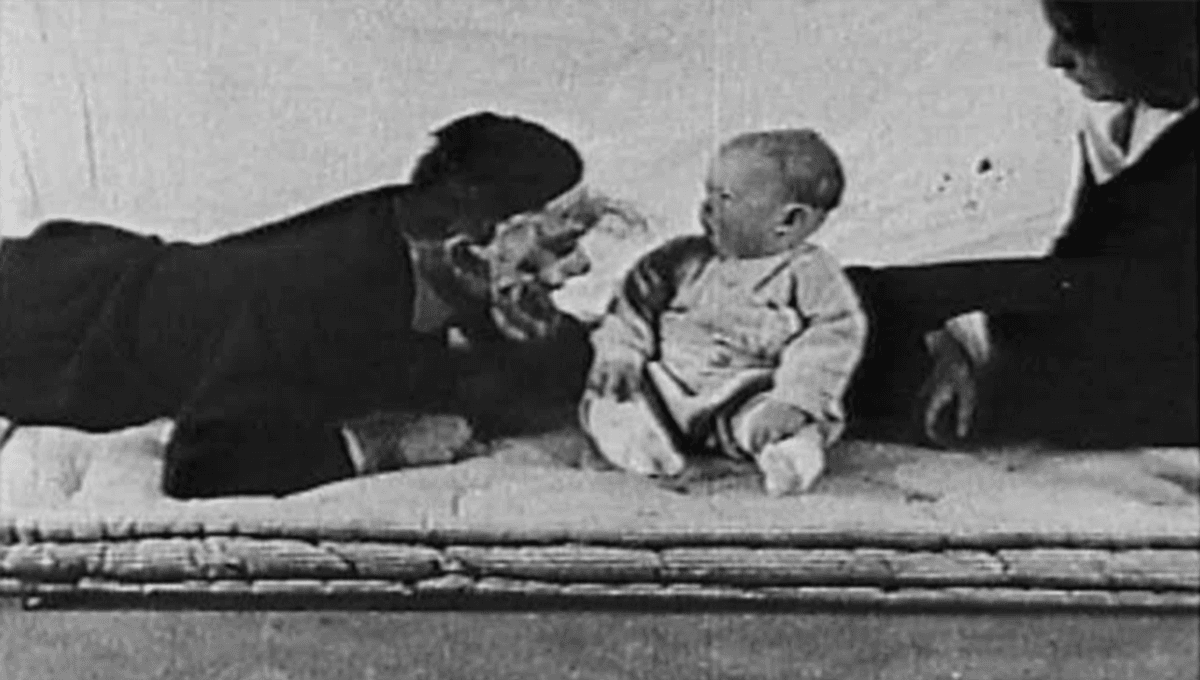
History is replete with notorious experiments which, quite rightly, would not be performed today. The “Little Albert” experiment takes a prominent place in the list, alongside the infamous Milgram experiment and the Monster Experiment.
ADVERTISEMENT GO AD FREE
The Little Albert experiment was actually inspired by another horror show you may be familiar with: Pavlov’s dogs. Before he did his infamous experiment, Ivan Pavlov was actually interested in the study of gastric juices, as well as collecting these juices from the dogs to sell as a “cure” for indigestion. During this work, he noticed that the dogs would salivate whenever they saw someone in a lab coat approaching to give them food, and even when a foodless lab assistant went by.
This inspired his experiment, which demonstrated “classical conditioning”. In it, a metronome was set ticking whenever the dogs were about to be given food. After a time, the food was taken away, but the dogs were conditioned to salivate whenever they heard the sound of Pavlov’s metronome.
What has this got to do with some poor human named Little Albert? Unfortunately, the work on classical conditioning inspired a horrendous experiment on a child, conducted by American psychologists John B. Watson and Rosalie Rayner.
For the experiment, the two took a healthy and “stolid and unemotional” infant “reared from birth in a hospital environment”, and began experimenting on him from the age of about 9 months. First, they attempted to gauge how fearful he was of various objects, including “a white rat, a rabbit, a dog, a monkey, with masks with and without hair, cotton wool, burning newspapers, etc”.
The team noted that the child, named as Albert B in the paper, showed no fear at all when responding to these objects.
“No one had ever seen him in a state of fear and rage,” the team noted. “The infant practically never cried.”
ADVERTISEMENT GO AD FREE
This would soon change. They next tested what would happen when they smacked a long steel bar with a hammer, creating a loud sound.
“The child started violently, his breathing was checked and the arms were raised in a characteristic manner,’ the authors wrote. “On the second stimulation the same thing occurred, and in addition the lips began to pucker and tremble. On the third stimulation the child broke into a sudden crying fit. This is the first time an emotional situation in the laboratory has produced any fear or even crying in Albert.”
They had expected this, of course, but it was merely preamble to the conditioning aspect of the experiment. Though the subsequent experiment seems obviously unethical in modern times, it appears that they had qualms about it at the time too.
“At first there was considerable hesitation upon our part in making the attempt to set up fear reactions experimentally. A certain responsibility attaches to such a procedure,” they explained. “We decided finally to make the attempt, comforting ourselves by the reflection that such attachments would arise anyway as soon as the child left the sheltered environment of the nursery for the rough and tumble of the home.”
ADVERTISEMENT GO AD FREE
For the next part, they conditioned “Albert” using the hammer and steel bar. First, he was presented with a rat to play with. But whenever he reached out to touch it, you’d better believe it was hammer time. The team would strike the steel bar “immediately behind his head” whenever the infant, then 11 months old, tried to play with the rat. Sure enough, after a few goes at this, “the infant jumped violently, fell forward and began to whimper”.
These tests continued for some time. After a while, the boy began to fear the rat by itself, associating it with the terrible din actually being created by humans. Eventually, they got the results they were anticipating.
“The instant the rat was shown the baby began to cry,” they wrote. “Almost instantly he turned sharply to the left, fell over on left side, raised himself on all fours and began to crawl away so rapidly that he was caught with difficulty before reaching the edge of the table.”
ADVERTISEMENT GO AD FREE
Far from being done, the team then presented Albert with a variety of other items, both fluffy and non-fluffy. Albert reacted normally to the non-fluffy items, but appeared to be distressed by anything fluffy, including rabbits, dogs, cotton wool, fur coats, and a Santa Claus mask.
During the Santa portion of the experiment, he experienced “withdrawal, gurgling, then slapped at [the Santa mask] without touching. When his hand was forced to touch it, he whimpered and cried. His hand was forced to touch it two more times. He whimpered and cried on both tests. He finally cried at the mere visual stimulus of the mask.”
Which, apart from any other potential psychological damage, probably somewhat ruined Christmas.
While certainly unethical, and not something which would be allowed by ethics boards today, the team claimed to have gained evidence against the Freudian view of fears.
ADVERTISEMENT GO AD FREE
“Emotional disturbances in adults cannot be traced back to sex alone,” they conclude. “They must be retraced along at least three collateral lines – to conditioned and transferred responses set up in infancy and early youth in all three of the fundamental human emotions.”
There have been claims over the years that Little Albert grew up to be William Albert Barger, who went on to have a full and long life, though with an aversion to animals. However, there is no definitive evidence that Barger was Albert B. Another plausible candidate is a boy named Douglas Merritte. This boy had significant neurological impairments which, as well as adding a new layer of ethical concerns, may have altered his reactions and affected the results of the whole unethical experiment.
Source Link: The "Little Albert" Experiment Would Not Be Approved Today, And For Good Reason